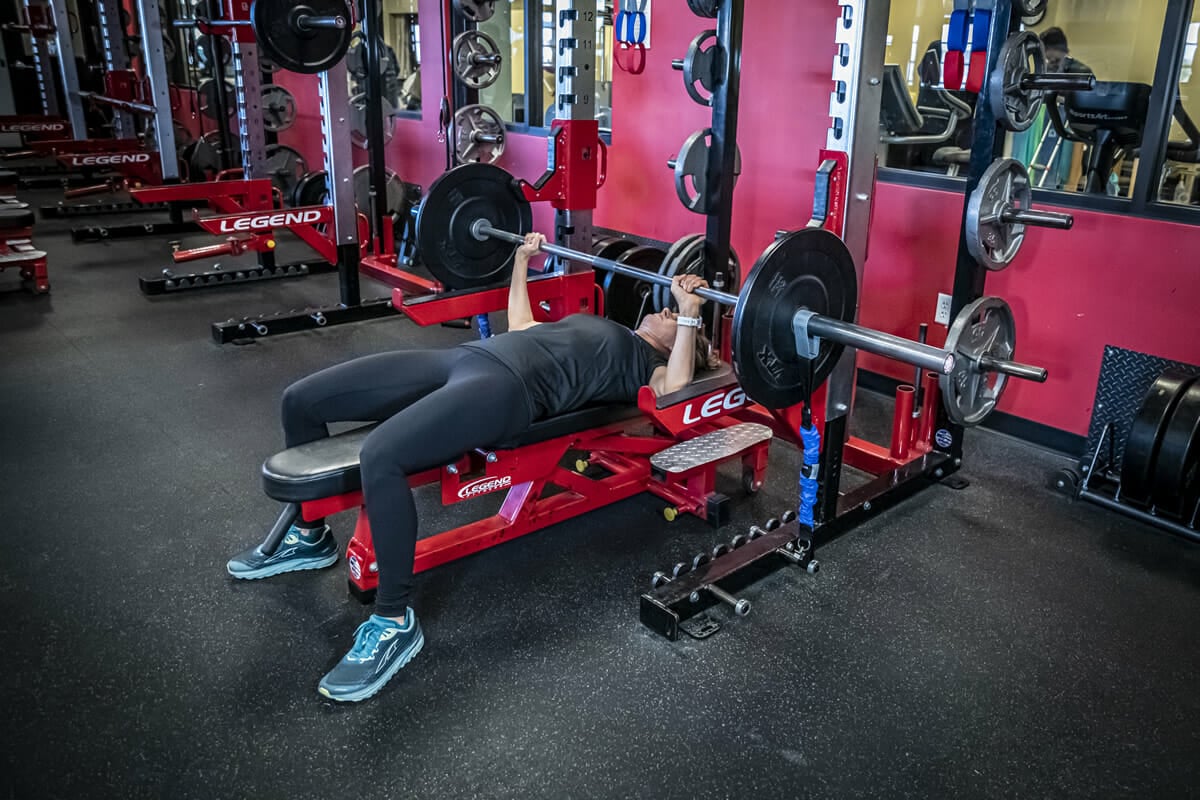Using Variable Resistance for the Bench Press

Using Variable Resistance for the Bench Press
Enhance Your Bench Press
Reading time: 5 Minutes
Introduction
As strength and conditioning professionals, we’re constantly seeking ways to optimize performance for our athletes. When it comes to upper body strength and power development, the bench press has long been a staple exercise. However, even the most seasoned bench press enthusiasts can hit a plateau in their progress. That’s where variable resistance training comes in. In this article we’ll explore the concept of variable resistance, its advantages, and how to effectively incorporate it into your bench press routine.
What is Variable Resistance?
Variable resistance training involves the utilization of bands, chains, or cords to manipulate the load during different phases of the bench press movement. The purpose of this technique is to create an exercise environment that matches the mechanical advantage of the upper body as it progresses through the range of motion. By doing so, variable resistance training challenges the muscles in unique ways, leading to enhanced strength gains.
Advantages of Variable Resistance
Variable resistance training offers several advantages when incorporated into your bench press routine:
1. Safety: One of the primary benefits of variable resistance training is improved safety. By adding cords to the weights, the heaviest loading occurs when your arms are fully extended. This optimal position allows for improved technique and form during the descent phase, while providing a stimulating load during the ascent. Additionally, the reduced “dead weight” on the bar makes it easier for spotters to provide assistance when needed.
2. Stability: Variable resistance training promotes increased stability by engaging additional muscles in the process of controlling the force exerted by the bands, cords, or chains. This activation of supporting muscles enhances overall strength, coordination, and stability in the chest, shoulders, and arms. Moreover, it helps address any muscle imbalances or joint instability issues that may be present, ensuring a more well-rounded training effect.
3. Explosiveness: In a traditional bench press movement, deceleration often occurs at the end of the range of motion due to the body’s anticipatory response. By incorporating variable resistance, individuals can train themselves to generate power and explosiveness through this end range of motion. This improvement in explosive strength can have significant benefits for athletes in sports that require rapid upper body movements.
How to Incorporate Variable Resistance
When integrating variable resistance training into your bench press routine, it’s important to start with lighter loads to master the technique. Begin with approximately 5-15% of your body weight and progress gradually as you become more comfortable. Focus on maintaining proper form and technique throughout the entire range of motion. Our specially designed bench press cords with quantified resistances can assist in determining the appropriate load for your specific needs.
Conclusion
Variable resistance training is a valuable tool for enhancing bench press performance. By incorporating our cords into your routine, you can take your upper body strength and power development to new heights. The safety benefits, stability improvements, and enhanced explosive strength make variable resistance training a worthwhile addition to any strength and conditioning program. Remember to start with lighter loads, prioritize mastering proper form, and gradually progress as your strength improves. With variable resistance, you can unlock new levels of performance on the bench press.
References:
Garcia-Lopez, D., Hernandez-Sanchez, S., Martin, E., Marin, P.J., Zarzosa, F. and Herrero, A.J. Free-weight augmentation with elastic bands improves bench press kinematics in professional rugby players. JSCR, 30(9): 2493-2499.
Hutchison, D. (2015). Perform-X Training Systems Education Manual.
Joy, J.M., Lowery, R.P., de Souza, E.O., and Wilson, J.M. Elastic Bands as a Component of Periodized Resistance Training. JSCR, 30(8): 2100-2106. 2016.